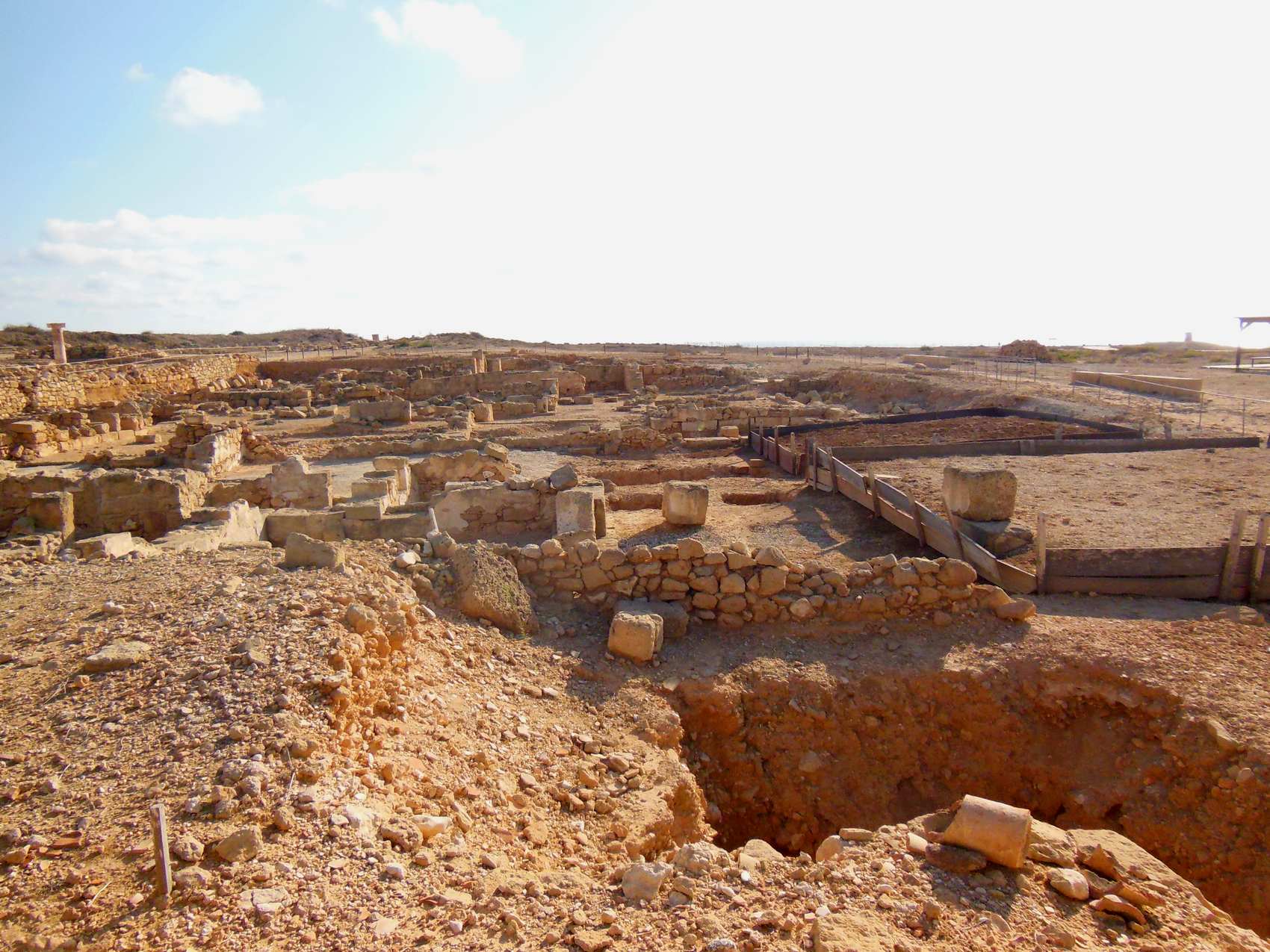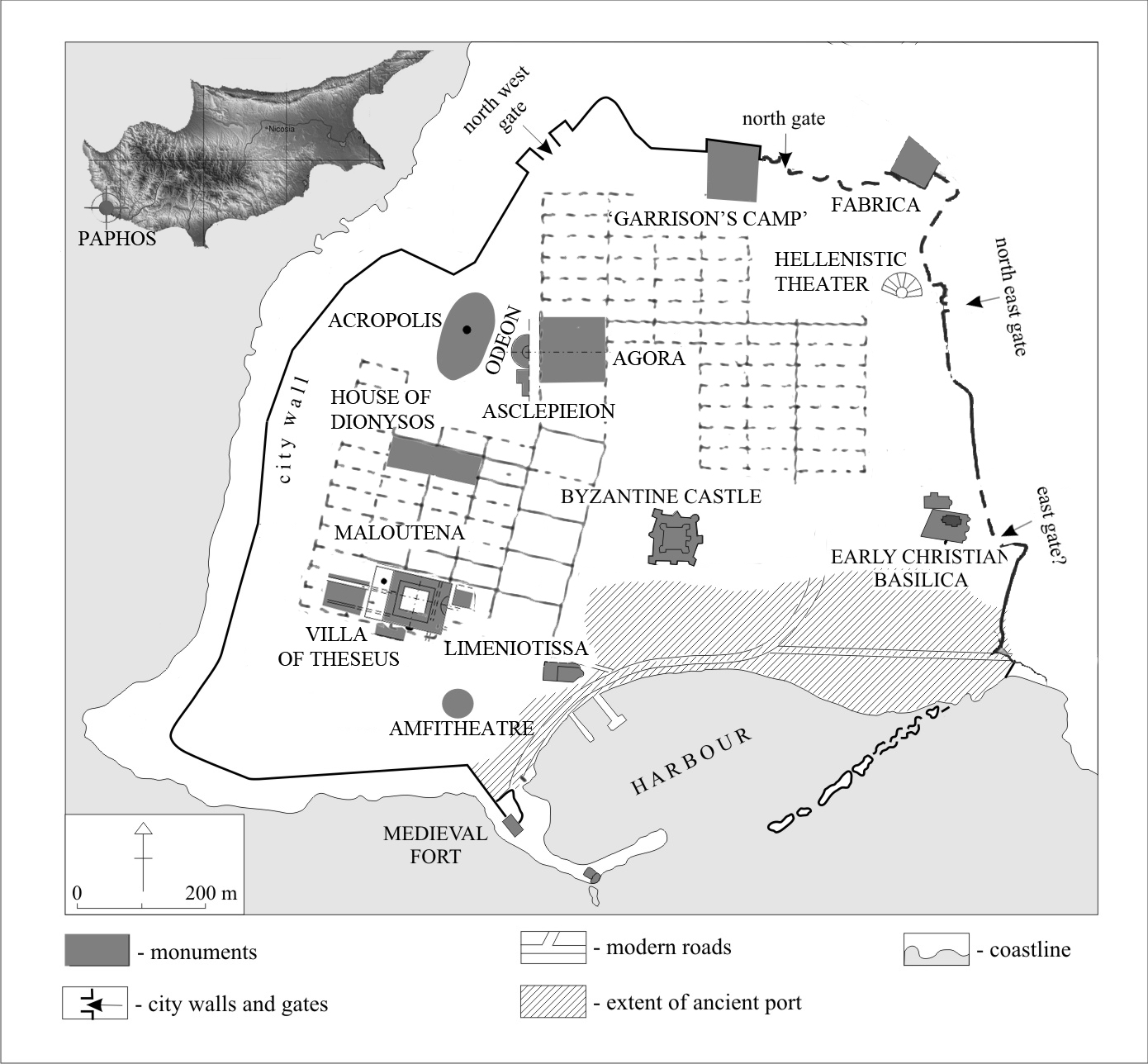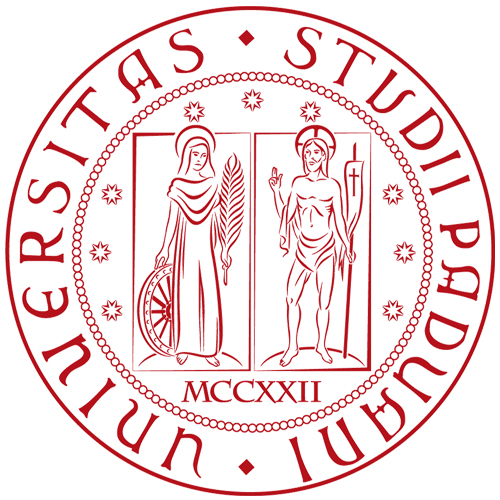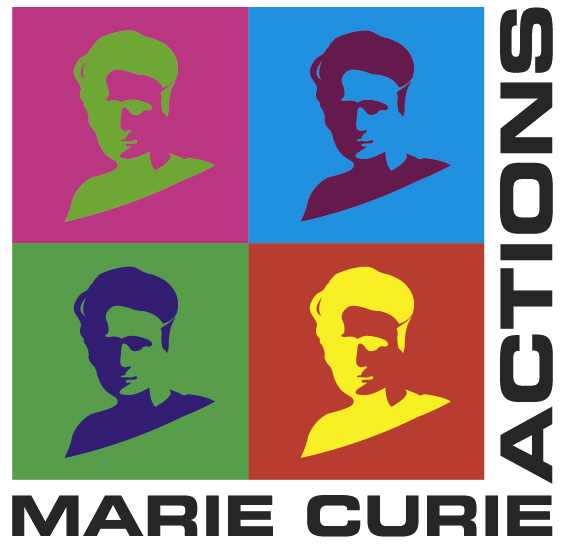This dedication to Arsinoe Philadelphos is inscribed on a small cylindrical altar, a common support for the cults of the Ptolemies in Cyprus. Among the inscribed dedications to Arsinoe found in the Paphos area, this is the sole specimen having been discovered in the new city, during the excavations of the Roman Orpheus House. The altar bears the same dedication on both sides. The text on the first side has remained unfinished: it was abandoned probably due to a mistake of the carver in the spacing between letters; the same dedication was then fully inscribed on the opposite side of the shaft.
Permanent ID
http://s.phrc.it/phrc014Images:
Photo 1: view of the site of the Orpheus House, Maloutena (S. Caneva, CC-BY-SA 0.4)
Photeo 2: plan of the archaeological site of Paphos, from the
Paphos Agora Project (the Orpheus House lies W of the Theseus House)






